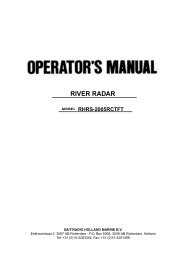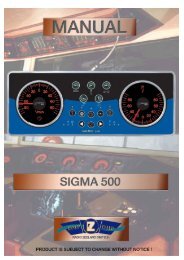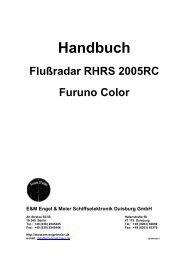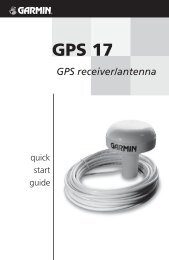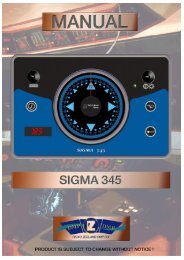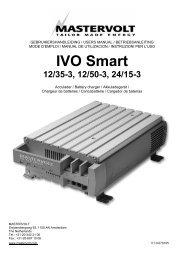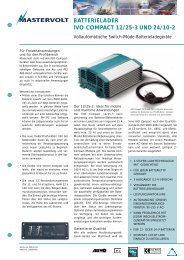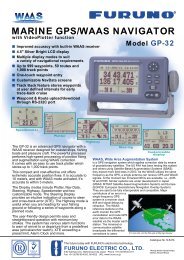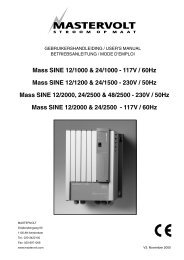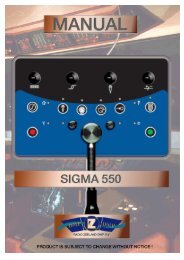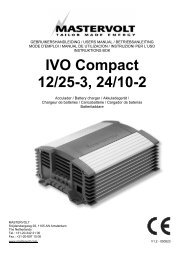You also want an ePaper? Increase the reach of your titles
YUMPU automatically turns print PDFs into web optimized ePapers that Google loves.
1 PRINCIPLE OF OPERATION<br />
Own ship's heading can be determined by decoding the data in the carrier<br />
frequency in addition to ordinary GPS parameters. In principle, a pair of two<br />
antennas A1(ref) and A2(fore), each connected with an associated GPS engine<br />
and processor, are installed along the ship's fore-and-aft line. GPS systems at<br />
A1 and A2 calculate the range and azimuth to the satellite. Difference in range<br />
between A1 and A2 is ∆λ + nλ where λ is 19 cm. “n” is automatically found<br />
during the initialization stage by receiving three satellites. A fraction of a carrier<br />
wavelength, ∆λ, is processed by FURUNO’s advanced kinematic technology in<br />
geographical survey, thus determining a vector (range and orientation) A1 to A2.<br />
In reality, a third antenna is used to reduce the influence of pitch, roll and yaw,<br />
and five satellites are processed to process 3D data. If the GPS signal is blocked<br />
by a tall building or the vessel is under a bridge, the 3-axis solid-state angular<br />
rate gyros in the processor unit take place of the satellite compass, maintaining<br />
the current heading continuously.<br />
Antenna A3<br />
∆λ<br />
Antenna A1<br />
Heading<br />
θ<br />
nλ<br />
λ<br />
Vector to decide heading<br />
Principle of satellite compass operation<br />
Antenna A2<br />
Fore-and-aft line<br />
Difference between the<br />
range from satellite to<br />
antenna 1 and the range<br />
to antenna 2.<br />
1-1



